
The Venu X1 is, according to Garmin, the blend of a Forerunner 970, Fenix 8, and Venu 3 series device. They noted that it was the culmination of designing a device without being held to the norms/limits of a given model lineage (e.g., Forerunner or Fenix names). In the end, Garmin decided it needed to fall into one of the existing product families, thus earning the ‘Venu’ name, albeit unlike any Venu/Vivoactive before it.
But in being this blend of three different devices, it can be confusing for consumers. Despite lacking a ‘Pro’ moniker (e.g., Venu Pro), it’s very much a pro-level Venu. It has virtually every feature of the Fenix 8, save a few. Thus, my goal here is to explain the differences, and in doing so, I pored through more than 234 different settings/options/features, to figure out where they differ and where they align.
However, what’s probably the most notable thing here is that all three watch series now share the same codebase. As such, virtually every single setting is identical. That may sound logical/obvious, but that’s not at all how it was just a year ago – with Venu, Forerunner, and Fenix product teams all working from different sheets of music. As you might remember in my Forerunner 965 vs Garmin Epix comparison, it was mind-boggling how options/settings had different names, different components, etc… That’s all gone.
Which doesn’t mean there aren’t different features. After all, the Fenix 8 costs $200+ more than the others. But those features are toggled on specifically, such as Virtual Caddy in Golf, or an extra sport profile or two, like Surfing or Duathlon. Sometimes, it’s extra hardware driving those enablements – such as is the case for diving and other high-speed watersports on the Fenix 8 (which has a higher water resistance rating, plus a depth sensor).
From a pricing standpoint, you’ve got:
Forerunner 970: $749
Venu X1: $799
Fenix 8: $999+ (depending AMOLED/SOLAR/size/etc…)
In any case, let’s get into it.
(Note: In the case of all three watches, all three are using the latest public betas as of August 6th, 2025, which is the biggest consolidation of all these new features across all three watches. Otherwise, the software features wouldn’t account for the new features introduced on the FR970 & Venu X1. Garmin generally releases these public betas to production in the mid-to-late August timeframe.)
The Hardware Differences:
By far, the most significant difference between these watches is simply the hardware form factor. The Fenix 8 is the largest (no matter which size you get), while the Venu X1 is not only the smallest, but also the thinnest GPS watch Garmin has ever made. As one might guess, the larger the watch case, the larger the battery life. Though aspects like the display size are inverted here, with the super-thin Venu X1 also having the largest wearable display Garmin makes today.
First up, let’s look at the case size options:
Forerunner 970: 47mm
Venu X1: 46mm
Fenix 8: 43mm, 47mm, and 51mm
Note that while I’m not comparing the Enduro 3 in this giant post, it’s basically treated as a Fenix 8 Solar-MIP unit in all software respects, with the only real differences being the lack of speaker/microphone, and lack of diving depth gauge. Otherwise, you can simply pretend it’s a cheaper Fenix 8 for $799.
Of course, each of those cases has a different weight (outlined in the chart below), but more importantly, with the Fenix specifically, there are a gazillion different weight combinations based on which case materials, band, and size you choose.
Next, from a display perspective, focused specifically on the AMOLED version:
Forerunner 970: 1.4” AMOLED display at 454x454px
Venu X1: 2” AMOLED display at 448x486px
Fenix 8: 1.4” AMOLED display at 454x454px (for the 47mm & 51mm, the 43mm is a 1.3” display)
As you can see, the display size is substantially bigger on the Venu X1. Note that all three units do support Garmin’s newish ‘Large Font Size’ option (you can enable it in the settings), which makes most of the watch user interface in bigger fonts – essentially to help those with more finely aged eyesight.
Now, in my usage of all three of these watches for extended periods of time, the single biggest factor here really is the battery. Sure, size and weight are a consideration, but the battery life gap between the Venu X1 and the others is huge. Specifically in that the Venu X1 (in an always-on configuration) barely squeaks into two days of battery life sometimes, despite turning down the settings (with a few hours of GPS time per day). Likewise, on a 7-hour hike this past weekend, I drained the battery from ~100% to 3%. This isn’t the watch you want for deep trekking.
Whereas for the Fenix 8 and Forerunner 970, they can hold their own for longer activities – for which I’ve done many upwards of 8-14 hours across those two watches, without any real issues. Sure, the FR970 gets less battery life, but it’s totally manageable for most scenarios, and the battery life claims hold up.
Now, part of the reason for these big differences is the newer display that Garmin is using on the Forerunner 970 & Venu X1. That display is substantially brighter than the Fenix 8 display (in terms of nits). Unfortunately, Garmin won’t disclose how many nits each display has (they are the only brand to not do this), but it’s largely assumed that the Fenix 8 display is a 1,000-nit display, and the Forerunner 970 & Venu X1 displays are likely 1,500-2,000-nit displays. Note, to be super-clear: There’s zero issues seeing either the Fenix 8 or FR970/Venu X1 displays in even the brightest of conditions. I live in the Mediterranean on an island in bright sun conditions, it’s just factually not an issue.
Even on the lowest settings, the two newer watches are far brighter than the Fenix 8 on its default setting.
However, what’s ironic here is that, due to Garmin’s haphazard implementation of display brightness on the Venu X1 & Forerunner 970, you can’t meaningfully turn down the brightness levels (to match that of the Fenix 8), and thus, it burns battery like crazy. Even setting it to the lowest brightness level (1/3rd), is barely different in terms of actual display brightness, and still brighter than the Fenix 8. Garmin has literally created a battery-life own-goal here by not allowing more user control. And in fact, it’s the single biggest reason I’d shy away from the Venu X1 right now (despite loving every other aspect of it).
Lastly, when it comes to the speaker, the Venu X1 is by far the loudest. I recorded myself on all three watches concurrently, and then played them back at max volume. The Fenix 8 was the quietest, followed a bit louder by the Forerunner 970, and then substantially louder was the Venu X1. Notably, in recent public beta firmware, the Forerunner 970 gained the Voice Notes feature.
Here’s a quick recap of the hardware differences:
Finally, while all three watches have Garmin’s latest optical heart rate sensor, the Garmin Elevate Gen5, it should be noted that the Venu X1 doesn’t have ECG hardware internals. I’ll cover that more in the next section on general features.
General/Daily Feature Differences:
When it comes to day-to-day differences (non-sports aspects), the three units are remarkably similar. Garmin has adopted slightly different user interface styling for each unit, owing to the company’s belief that a Fenix user wants a different UI than a Forerunner user and a different UI than a Venu user. However, for really the first time ever in Garmin’s history, the actual menus of all three devices are identical, even if the styling of the fonts/icons are slightly different.
For example, you can see this in the widget glances here, being slightly different, despite being identical in terms of the content (the Venu X1 has a more bubbly look, the Fenix 8 has a more industrial look, and the Forerunner 970 sorta splits the difference):
This, in turn, means that the features in most cases are identical as well, especially once Garmin publishes their Summer 2025 firmware update out of public beta and into production. That firmware update essentially merges the new features from the Venu X1 & Forerunner 970 onto the Fenix 8, and likewise, the pile of new Fenix 8 features into the Venu X1 & Forerunner 970. For example, you’ll find the new calculator app now on the Forerunner 970 & Venu X1, as with the other features like the new evening report:
Now, there are some minor differences that are driven by hardware that are worth mentioning. First is the biggie – there’s no ECG on the Venu X1. Despite having an Elevate Gen5 optical HR sensor, it lacks other hardware required to make ECG happen. First, there’s no metal bezel to touch to complete the ‘current’ normally required for an ECG. While Garmin could have gotten around that by using the upper right button instead (as they did with the Venu 2 Plus for ECG), that would have increased the number of components within the case substantially. Further, the Venu X1 then lacks the metal contacts on the underside of the sensor as well, also required for ECG. Point being, this isn’t going to be some software update to make it happen.
The next thing you might notice is that the flashlights are very slightly different. In the case of the Forerunner 970 & Fenix 8, there are two white LEDs and one red LED. These are used when you either double-tap (Fenix 8/FR970) or long-hold (Venu X1) to turn on the LED flashlight, and at the four white levels and 1 red level. Now, you may be wondering whether or not you’d notice a difference on the brightest white setting between the Venu X1 & the Forerunner 970/Fenix 8 (given it has half as many white LEDs)? The answer: Not really
Look, there’s obviously going to be more light coming out of the Fenix 8/Forerunner 970, but at no point in the last few months did it ever feel like I needed more light. We’re talking about a flashlight roughly akin to your phone’s flashlight, with the purpose generally for lighting up near-field stuff. And for many people, it’s often used on the lowest settings in the middle of the night, getting around houses/hotels/etc (where you don’t want to be blinded). Thus, while on paper there is some difference, in reality, you just can’t see it.
The last thing you’ll obviously notice is the lack of buttons on the Venu X1. It has two physical buttons, plus the touchscreen. Whereas the Forerunner & Fenix adopt Garmin’s standard 5-button layout. I’m genuinely surprised Garmin didn’t go with three buttons on the Venu X1 (as they have on their other Venu watches). The overwhelming trend in watches in recent years is adding buttons (see Samsung, Google, Apple, etc…) – not removing them. I suspect again, the ‘slim’ battle drove this decision. But it’s ultimately a key reason I’d choose the Forerunner or Fenix instead, I just want more buttons.
While Apple and Samsung both have their mid-tier watches with two buttons, it’s important to remember that the second button is a Digital Crown (in Apple’s case), effectively acting as a third control interface. In any case, as for the Venu X1, I wouldn’t say that the two buttons are a problem per se, but rather, just my strong personal preference to have more buttons, especially for getting through menus and such, not being reliant on touch. I didn’t have any issues with any watch in wet/rainy weather conditions.
Beyond these points, virtually everything else is the same within the day-to-day usage of these watches.
Sport Feature Differences:
Perhaps no bigger beneficiary of the consolidated code base is the sports section. Previously, these product lines had countless little nuanced differences around how specific mapping, training, or sport profile features were implemented. Infuriating differences, but often only differences you’d find out the hard way.
Now, that’s all gone. In going through every single setting in every single menu, they’re identical.
Still, there are a handful of differences on which features they’ve enabled, starting specifically around sensor support. They are as follows:
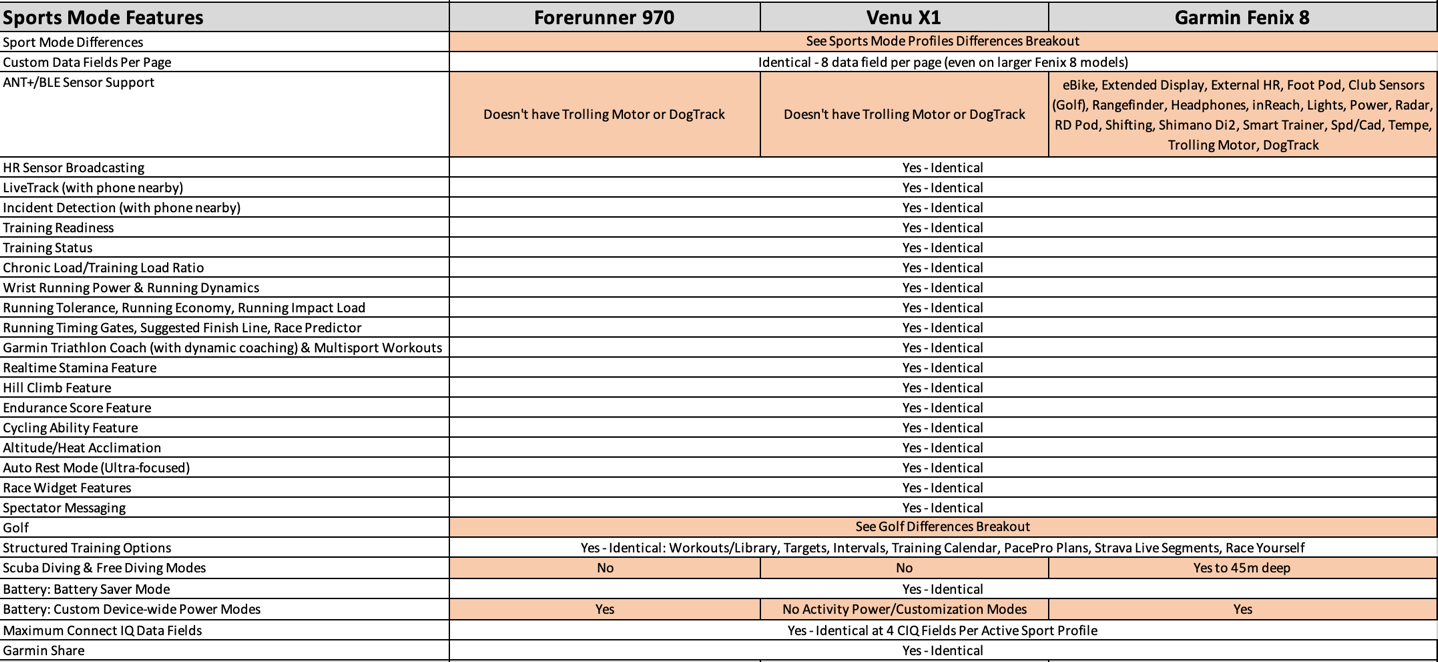
Next, we get into the sport/workout activity profiles. All three watches have almost identical sets of sports profiles, except in two categories. First, all the stuff that’s the same:
Run, Walk, Hike, Track Run, Treadmill, Virtual Run, Indoor Track, Trail Run, Ultra Run, Adventure Race, Obstacle Racing, Triathlon, SwimRun, Bike, Bike Indoor, MTB, eMTB, Cyclocross, Road Bike, eBike, Gravel Bike, Bike Commute, Bike Tour, BMX, Pool Swim, Open Water, Strength, Cardio, Mobility, HIIT, Yoga, Pilates, Elliptical, Stair Stepper, Row Indoor, Walk Indoor, Climb Indoor, Floor Climb, Boxing, Mixed Martial Arts, Jump Rope, Ski, Snowboard, Backcountry Ski, Backcountry Snowboard, XC Classic Ski, XC Skate Ski, Snowshoe, Ice Skating, Snowmobile, SUP, Kayak, Row, Boat, Sail, Sail Expedition, Soccer/Football, American Football, Basketball, Baseball, Softball, Volleyball, Cricket, Lacrosse, Rugby, Field Hockey, Ice Hockey, Ultimate Disc, Gaming, Tennis, Pickleball, Padel, Racquetball, Squash, Badminton, Table Tennis, Platform Tennis, ATV, Overland, Motocross, Motorcycle, Rucking, Golf, Mountaineering, Bouldering, Fish, Hunt, Disc Golf, Horseback , Expedition, Archery, Inline Skating, Meditation, Breathwork, Track Me
And then, we’ve got the things that Garmin classifies as needing higher waterproofing levels (100m on the Fenix 8), which are unique to that watch:
Fenix 8 only: Sail Race, Surf, Kiteboard, Windsurf, Whitewater, Wakeboard, Wakesurf, Water Ski, Tube
*Note: FR970 does have Sail Race mode, but Venu X1 doesn’t.
Plus, the diving features that are unique to the Fenix 8 and its depth gauge:
Fenix 8 only: Snorkel, Scuba Dive, Apnea Dive
*Note: FR970 does have ‘Snorkel’ mode, but Venu X1 doesn’t.
Then, there are what I’ll classify as the outstanding oddballs.
Forerunner 970 has: Duathlon, Pool Triathlon, Brick (Venu X1/Fenix 8 don’t)
Fenix 8 has: Jumpmaster, Tempo Training (Golf mode)
Fenix 8 & Venu X1 have: Gaming (FR970 doesn’t)
When it comes to golfing, these are some differences to be aware of. The biggest one is that on the Venu X1 & Fenix 8, you get a much more detailed map of each hole, whereas on the Forerunner 970 you just get the green:
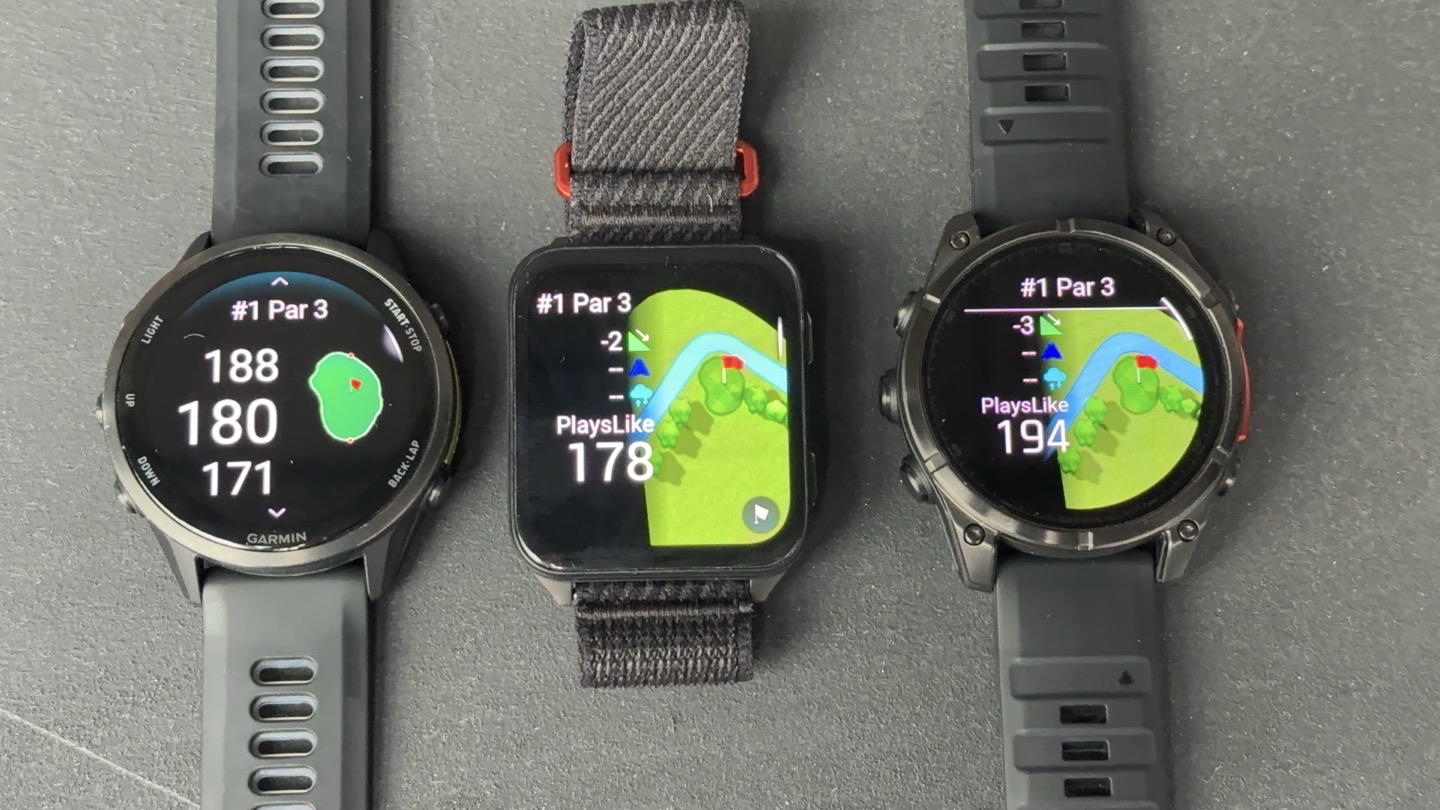
Additionally, the Forerunner 970 lacks the PlaysLike, Virtual Caddie, and Wind Speed features (along with others). Here’s a full chart:
When it comes to all other sports, general mapping and navigation features, all three watches are completely identical. Zero differences that I can find, except the Tides app isn’t pre-loaded on the Forerunner 970 (a slightly odd current omission, since it’s on the Instinct and numerous other watches). Thankfully, you can get it from the Connect IQ App store, and it’s fairly similar:

Lastly, it should be noted that the Venu X1 doesn’t have the custom Battery Manager modes that the Fenix & Forerunner have. Perhaps Garmin knows the battery on the Venu X1 is so crap (sorry, I meant ‘range limited’) that it ain’t gonna matter. Instead, they gave it a more basic ‘Battery Saver’ mode, which reminds you 25 times a day (starting around 48%) that you should turn it on.
Phew, got all that? Good, let’s start to wrap things up.
Accuracy Differences (GPS & Heart Rate):
The GPS and heart rate accuracy on all three watches is very similar, though obviously, they have substantially different antenna designs (and seemingly, different GPS chipsets). Most notably, the Venu X1 doesn’t have dual-frequency GNSS. That noted, as I’ve said for years, two things should be kept in mind:
1) I factually don’t care whether or not any GPS watch has dual-frequency, as long as it has equally good accuracy
2) Garmin’s non-dual-frequency watches from the last 3 years routinely beat almost all of its dual-frequency competitors, even in places like New York City
And, those two statements hold true with the Garmin Venu X1. Every bit of testing I’ve done in the mountains (French/Swiss Alps, Canadian Rockies, and Mallorca), dense trees, and downtown environments has shown virtually identical results. In fact, the only scenario where I’m seeing differing results is openwater swimming on the Forerunner 970, which doesn’t seem to be as good as the Garmin Fenix 8 or Venu X1. It’s not horrible or anything, but just not picture-perfect.
Meanwhile, for heart rate accuracy, all units use the same Gen5 optical HR sensor, though the Venu X1 lacks ECG. But ECG is an entirely different hardware piece than optical heart rate used for sport, so that’s irrelevant for optical HR accuracy. In almost all of my testing, I found all three units had strong and near-identical optical HR accuracy across a wide variety of sports. The one area they would occasionally struggle is outdoor cycling, due to road vibrations. And generally speaking, the heavier a watch (e.g., a bigger Fenix), the more prone it is to wrist-bouncing/wiggling, and thus lower accuracy. But that’s nothing new.
You can see the full and actual accuracy results (GPS & heart rate) in all of my reviews for these products.
Point being, at the end of the day, accuracy of heart rate or GPS data isn’t a deciding factor in this specific competition. Instead, it’s probably battery life.
Battery Life:
This is the single biggest area of difference between the three units. First, let’s look at the baseline/official specs:
Now, this then gets subdivided into two basic categories: Daily usage, and GPS usage. While one can also look at non-GPS workout usage (like a gym), the battery hit/impact there is frankly pretty much the same as during normal 24×7 usage.
In my testing, I almost exclusively use the Always-on display configuration. This means the display dims when I put my wrist down (versus shutting-off entirely, which is the default). Other brands like Apple & Google have transitioned their smartwatches to have this as the default as well, though Garmin has not yet done so. It’s a two-second switch to make in the settings, but it is my preference.
With the 47mm Fenix 8, I’m pretty consistently getting about 4-6 days of usage between charges, including usually 1-2 hours/day of GPS time (averaged over the course of a week). With the Forerunner 970, I’m in the 2-3 day range, likely owing to the brighter display. Again, this is with the always-on display enabled. But the Venu X1? It’s basically just beyond Apple Watch Ultra territory, I’m getting roughly 2 days of smartwatch usage. It’s not good.
But it’s not just daily usage that’s the problem, rather also GPS usage. On two recent hikes I did this past weekend, the Venu X1 almost ran out of battery after just 7 hours of hiking (with navigation enabled, but rarely on the map screen). It ended at 6%. The Fenix 8 & Forerunner 970? Far more, ending in the 70 & 80% range respectively (all three units were at ~100% at the start, and all with near identical settings, and all actually using a chest strap too). You can actually see the moments it drops really fast, when it somehow ends back up on the map page (the Venu X1 will occasionally switch to the map page automatically for reasons I don’t understand).
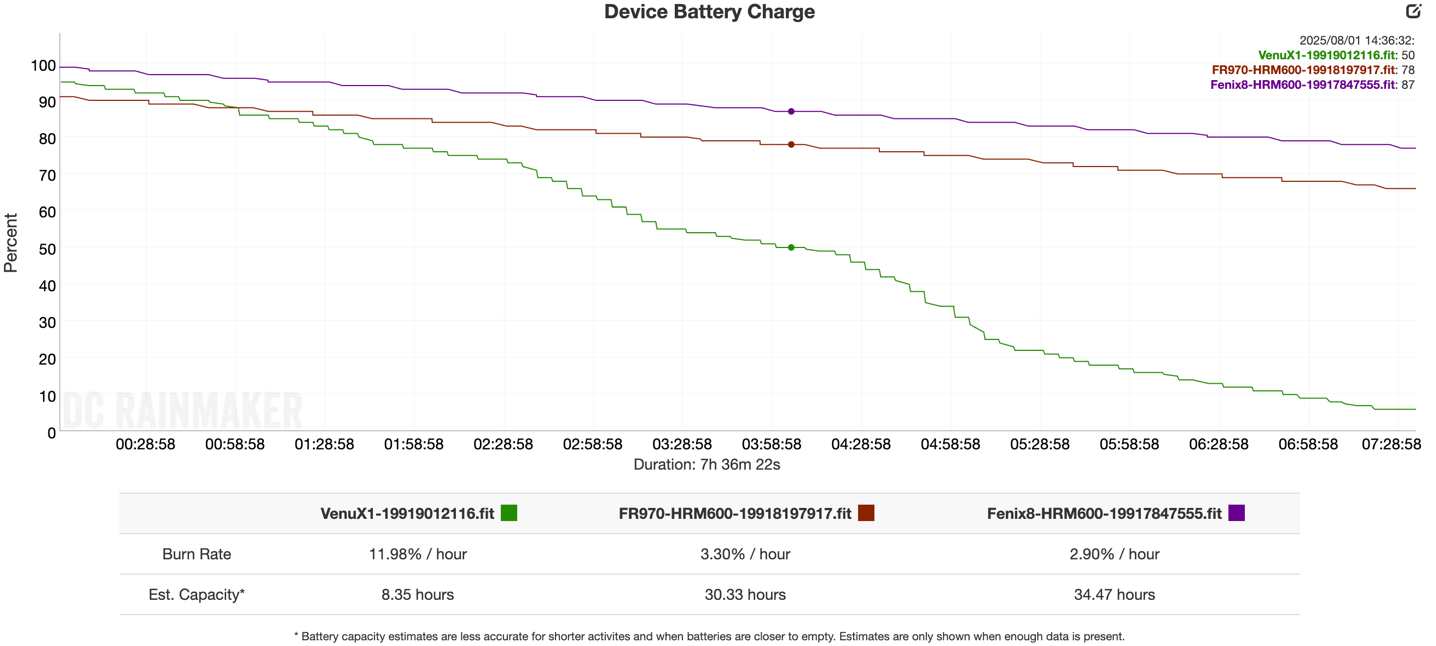
And the next day too:
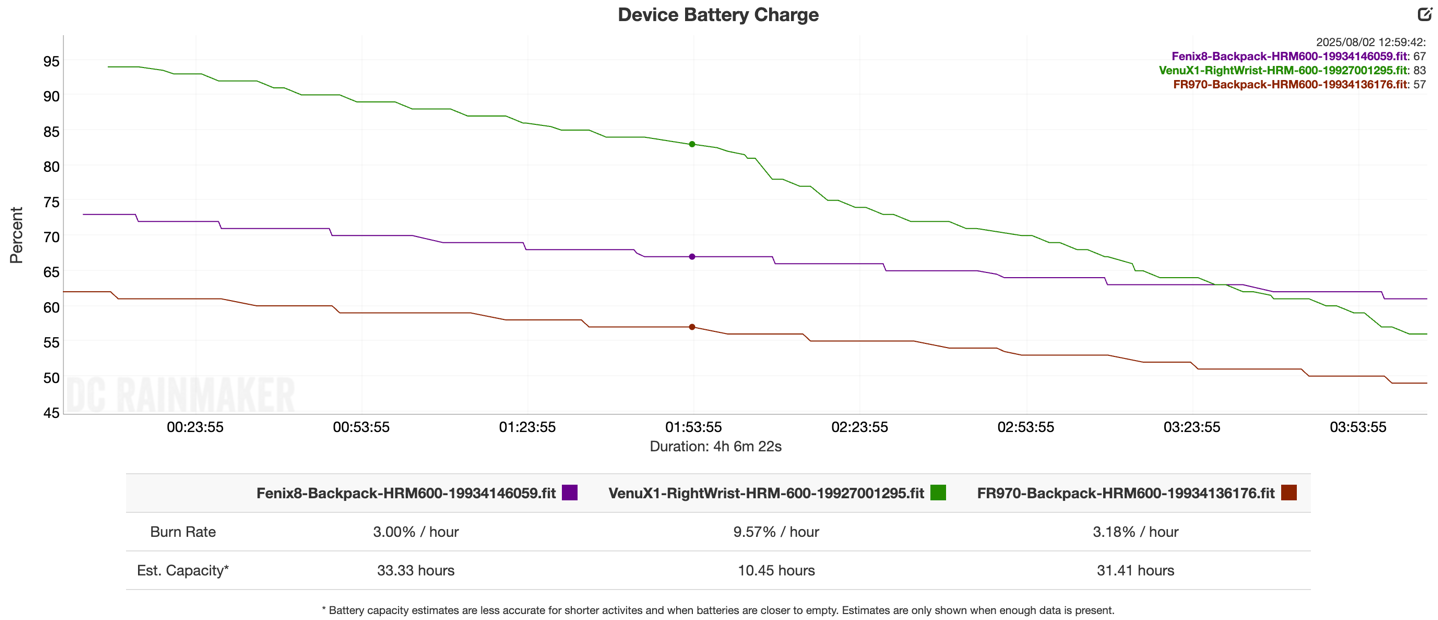
Or, a different hike from June:
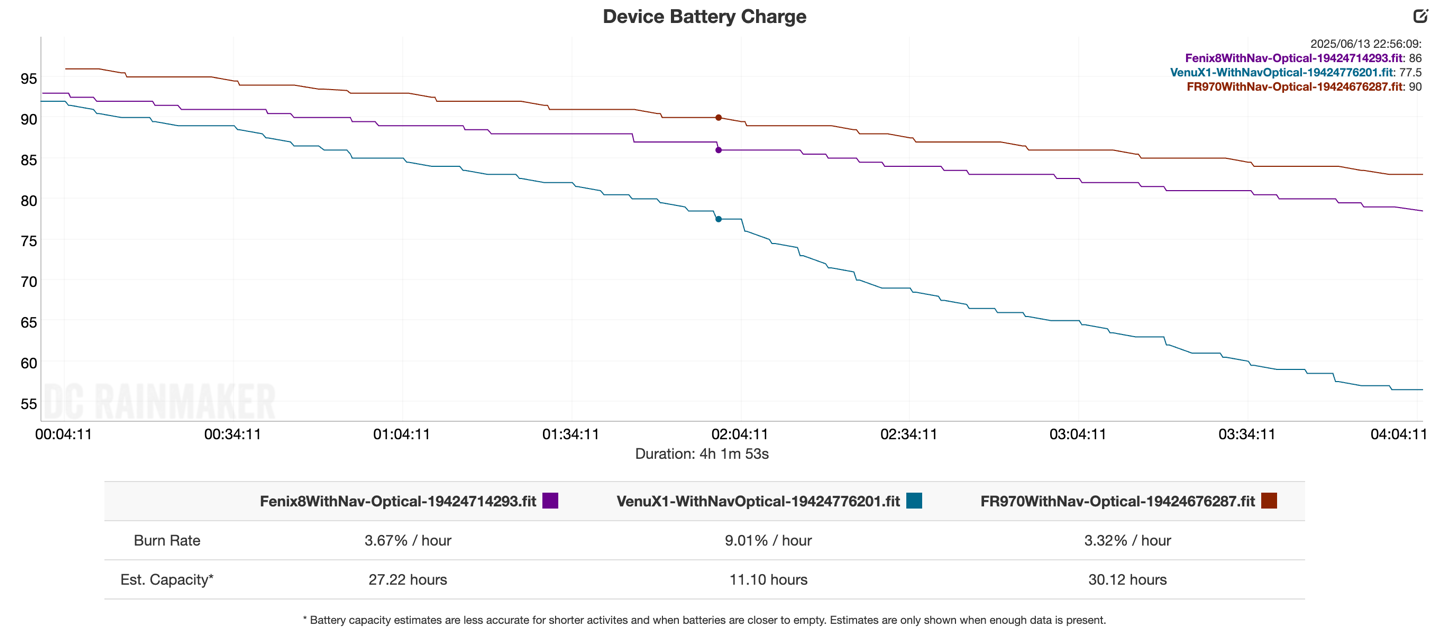
This type of battery life burn from these units is very consistent with all my other GPS workouts, where the Venu X1 roughly averages about 12-14%/hour. Whereas on the flip side, the AMOLED Fenix 8 (47mm) is around 3%/hour.
Now, as I outlined above, I think Garmin can fix a lot of this by giving us more/better options for the display brightness. But until they do that, if you need battery life, the Fenix 8 is where you want to be (or frankly, the Forerunner 965 for far cheaper).
Wrap-Up & Recommendations:
Ultimately, all three of these watches are really good, with near-identical software. However, the hardware differences between them will significantly drive your experience with them, especially around battery life, as well as features like ECG, or waterproofing.
For most sporty people, you could realistically choose any of the three and be happy, especially if you aren’t using the Always-on Display feature, and thus, getting more battery life (most applicable to the Venu X1). They all feature the same maps, roughly 95%+ the same sport profiles, and even areas that are technically spec different, like the flashlight or GPS chipsets, aren’t meaningfully different in real-world scenarios.
Whereas those wanting more battery life will near-certainly be pushed to the Fenix series. And while it’d be easy to assume this is some conspiracy to get you to spend more, all my discussions with Garmin, at both product team and executive level, seem to point more to just not fully grasping how much of an impact the newer Venu X1 & Forerunner 970 display brightness is having on battery burn. I do think we’re going to see this change, and we’ll get back some of that battery life through more granular control. And of course, those wanting diving features will need the Fenix 8. Or, those needing the Tubing profile.
But for most people, any of the three watches are great, and will also be heavily driven by your preferred design aesthetic.
As for me, I’ll be headed back to my Fenix 8 shortly after publishing the Venu X1 review. While I have no real gripes with the Venu X1 (aside from a pile of mostly annoyance-but-not-critical level bugginess), it just lacks the battery life I want. It’s basically racing the Apple Watch Ultra 2 on my other wrist for which unit will die first every other day. And that’s not why I buy a Garmin watch. Likewise, I prefer more buttons, which the Venu X1 lacks compared to the Forerunner or Fenix series. And while I think the Forerunner 970 is a great lighter watch than the Fenix 8, again, the real-world battery life in Always-on Display mode is downright rough for anyone doing daily outside GPS workouts.
But again, those are my preferences based on my workout amounts, etc… To each their own.
Thanks for reading!
Found This Post Useful? Support The Site!
At the end of the day, I’m an athlete just like you looking for the most detail possible on a new purchase. These posts generally take a lot of time to put together, so if you're shopping for the Garmin Forerunner 970, Garmin Venu X1 or Garmin Fenix 8 Series or any other accessory items, please consider using the affiliate links below! As an Amazon Associate I earn from qualifying purchases. It doesn’t cost you anything extra, but your purchases help support this website a lot.
And of course – you can always sign-up to be a DCR Supporter! That gets you an ad-free DCR, access to the DCR Quarantine Corner video series packed with behind the scenes tidbits...and it also makes you awesome. And being awesome is what it’s all about!

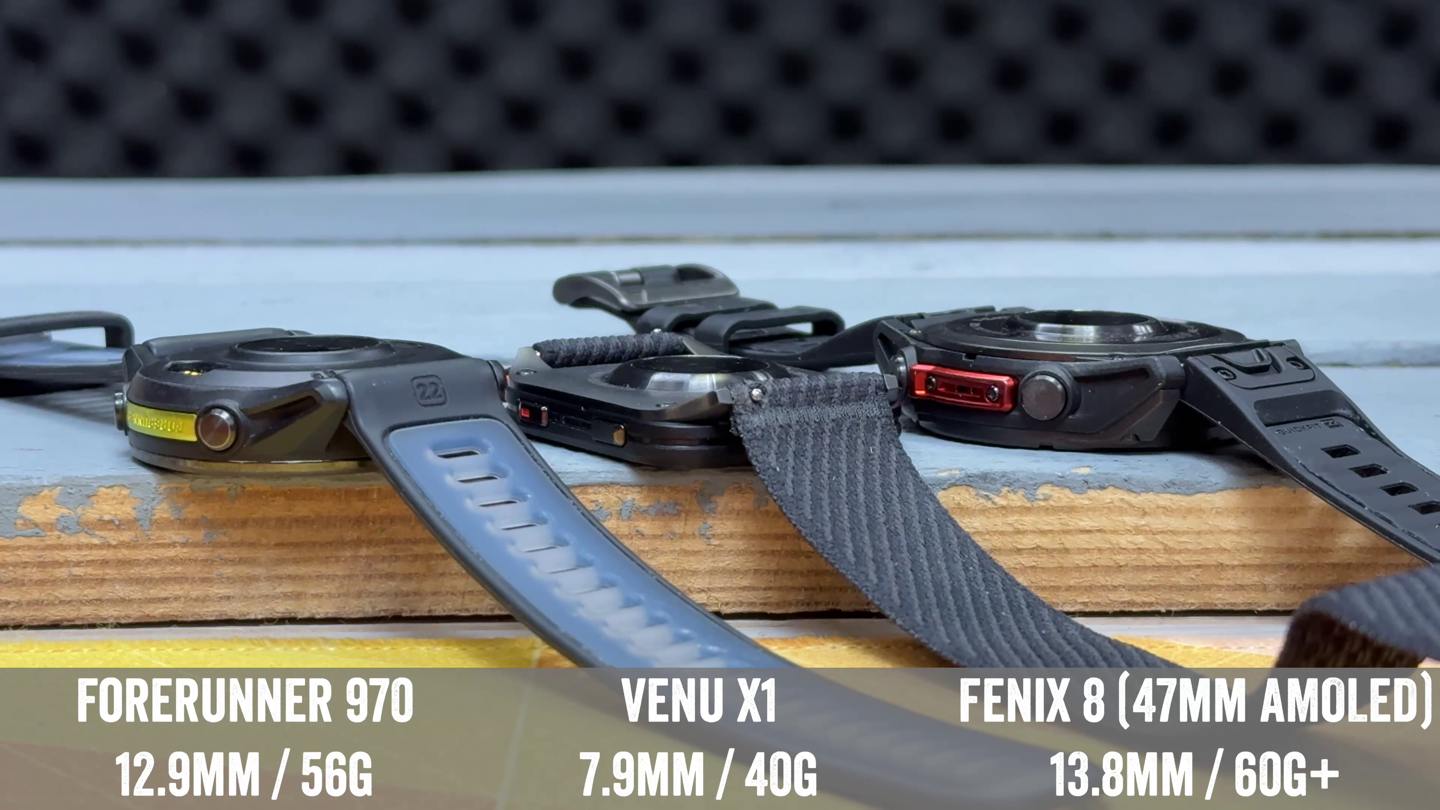
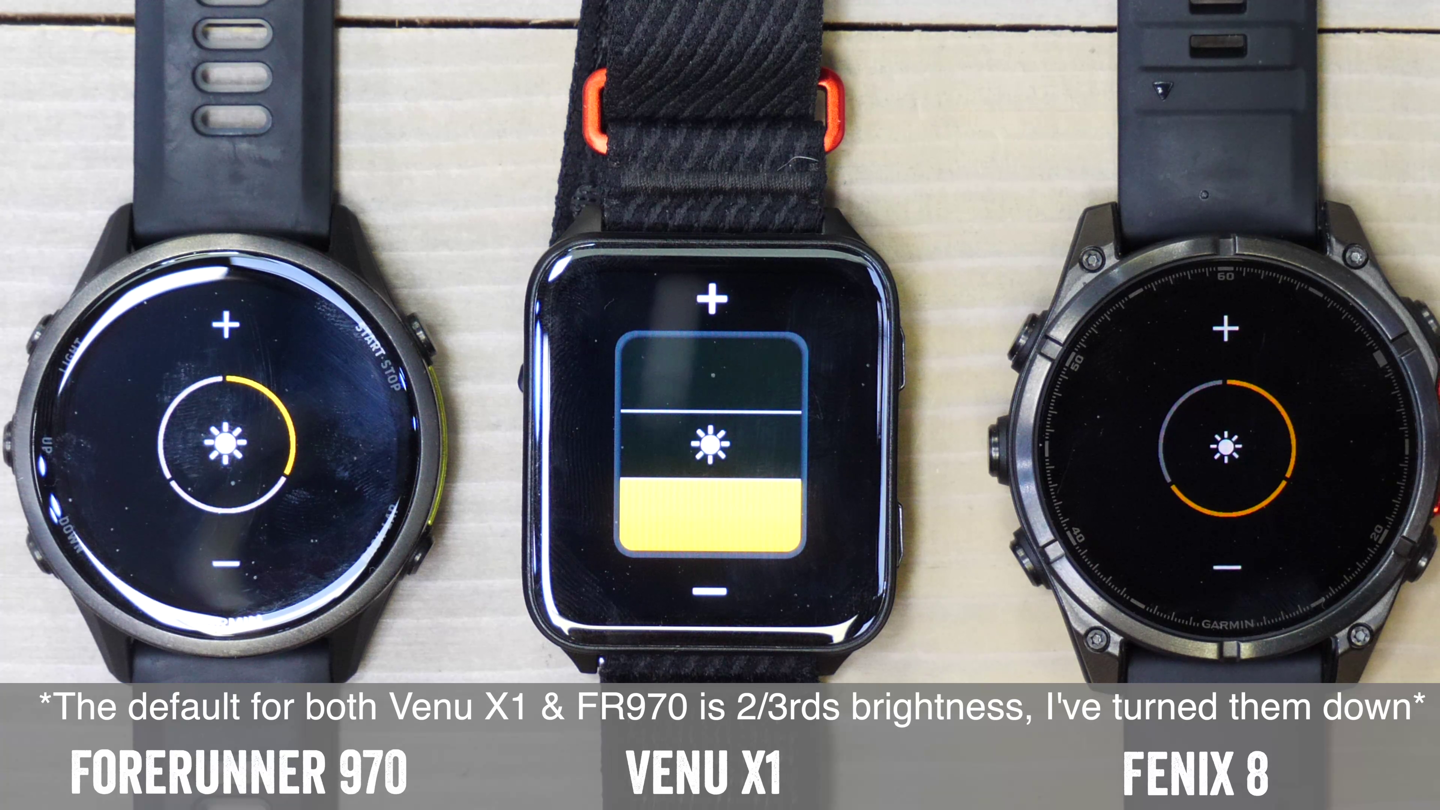
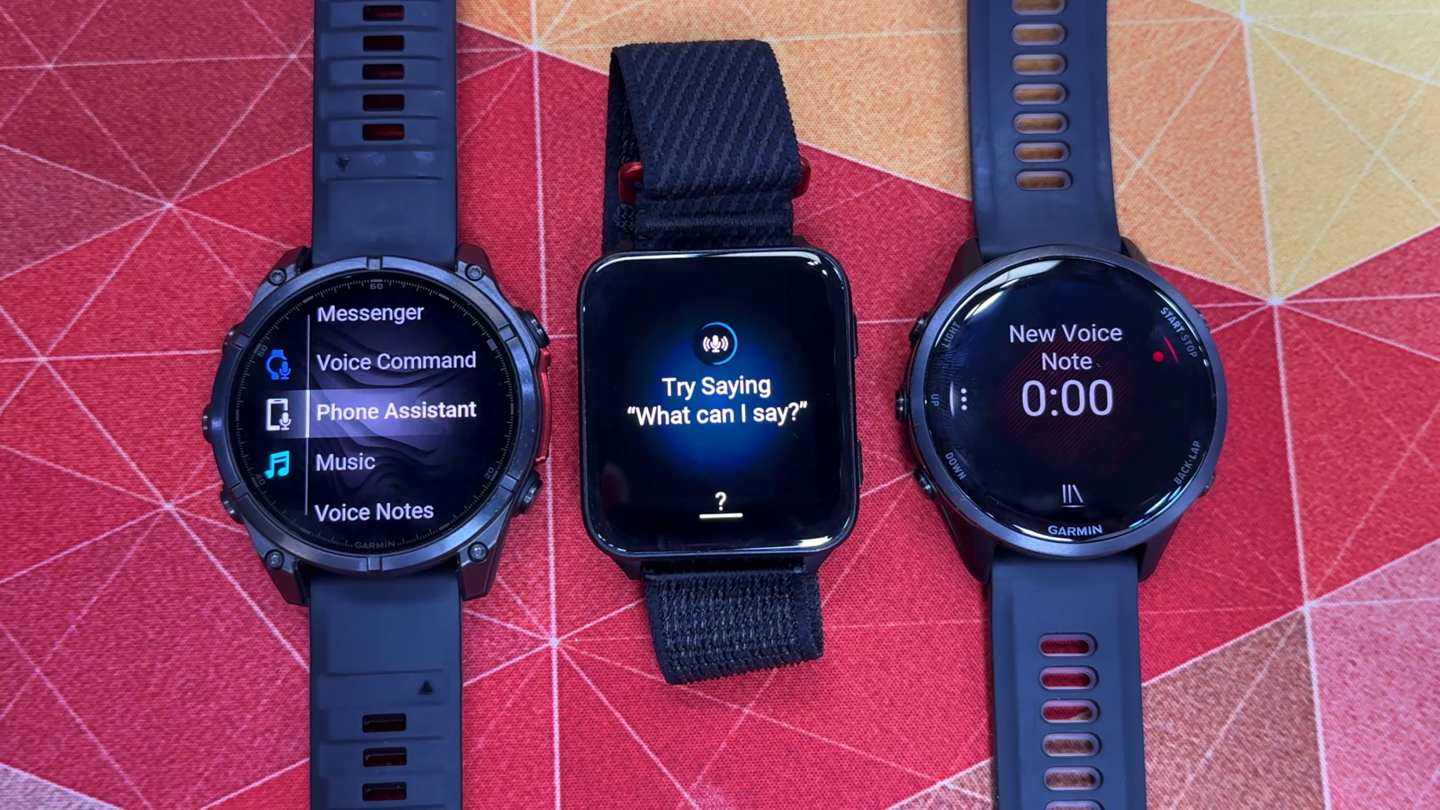
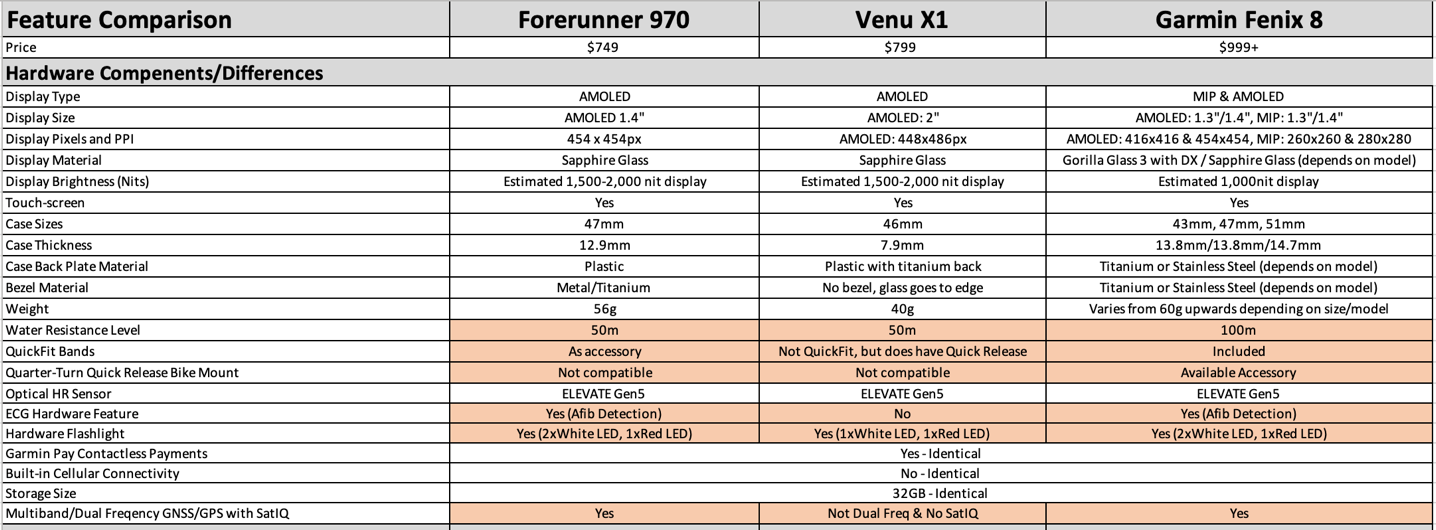
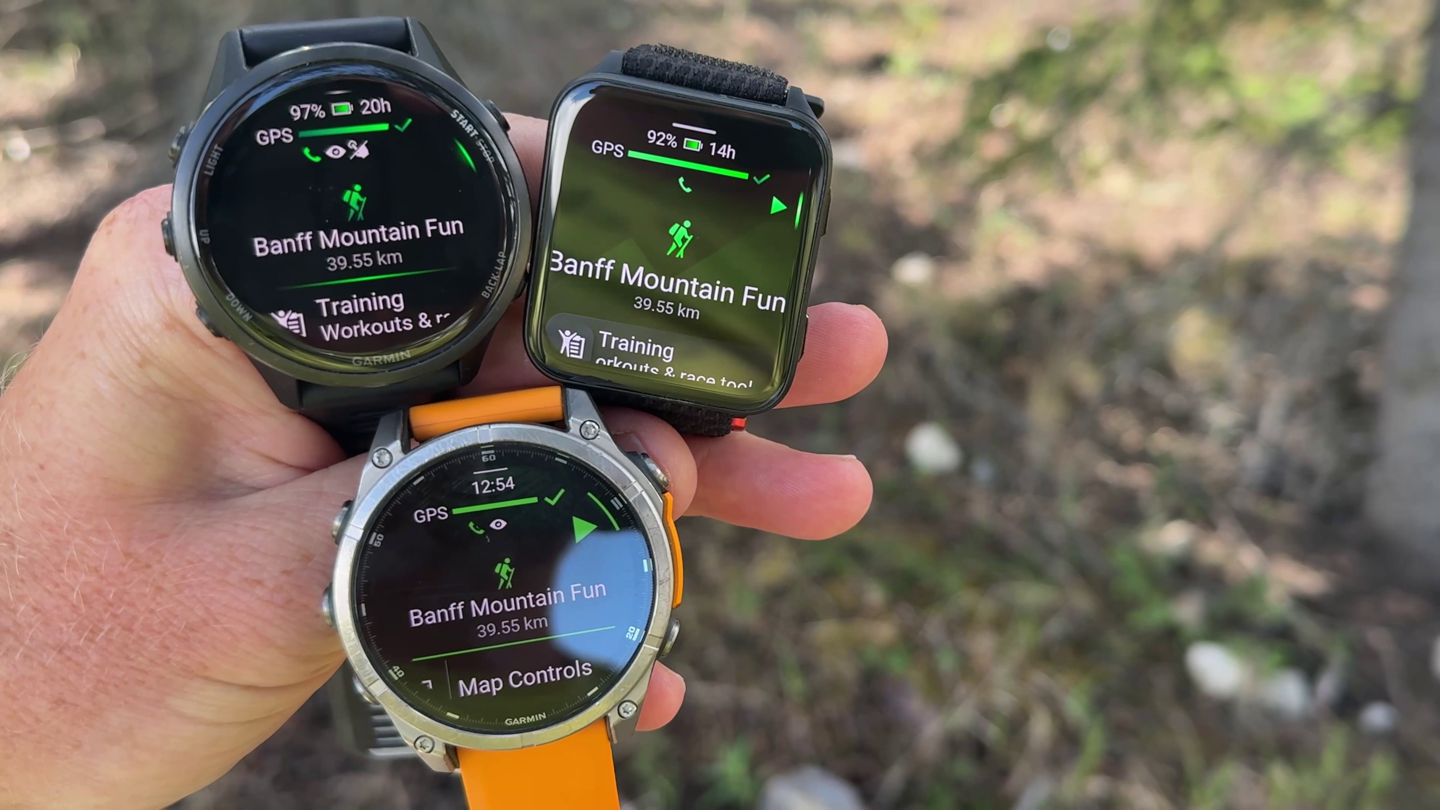
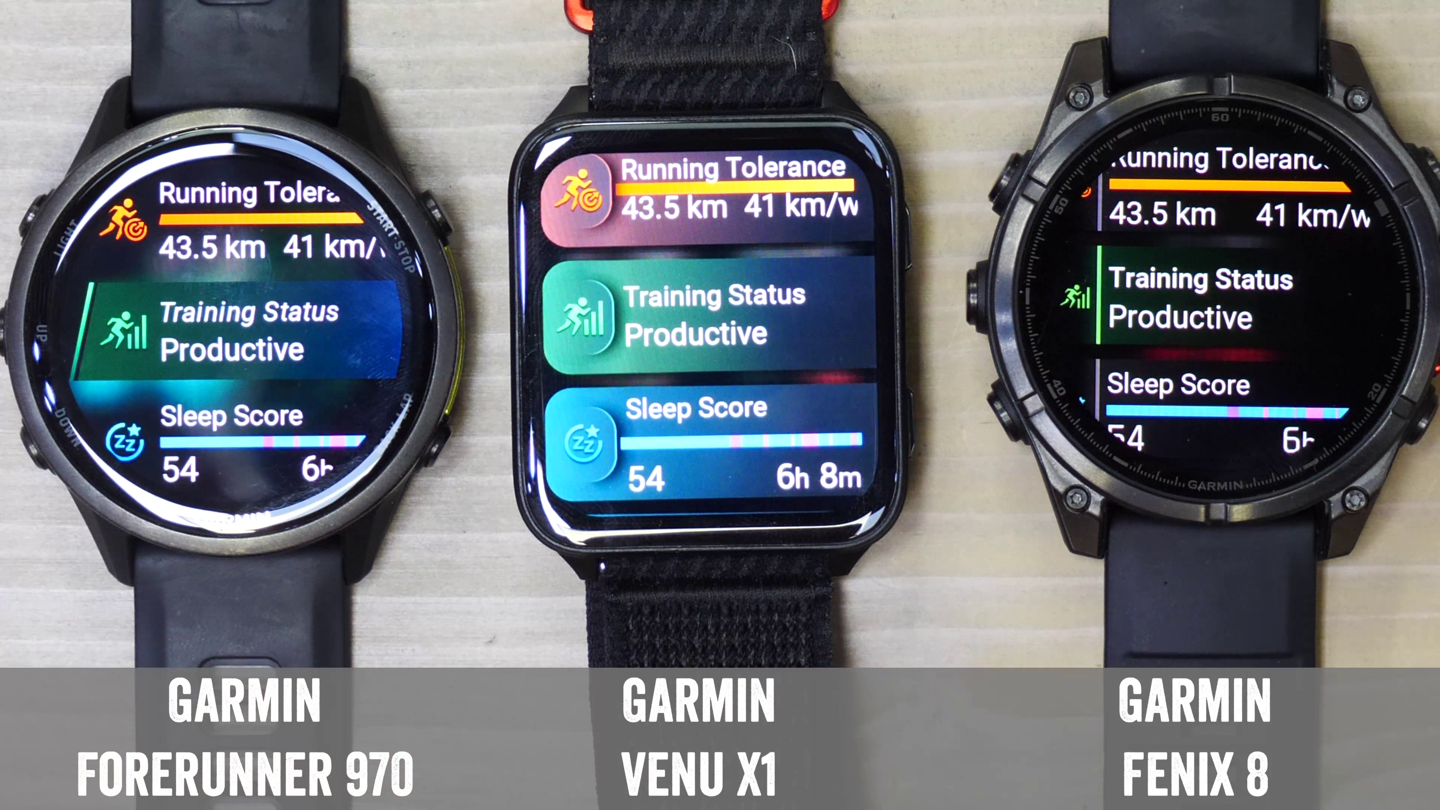
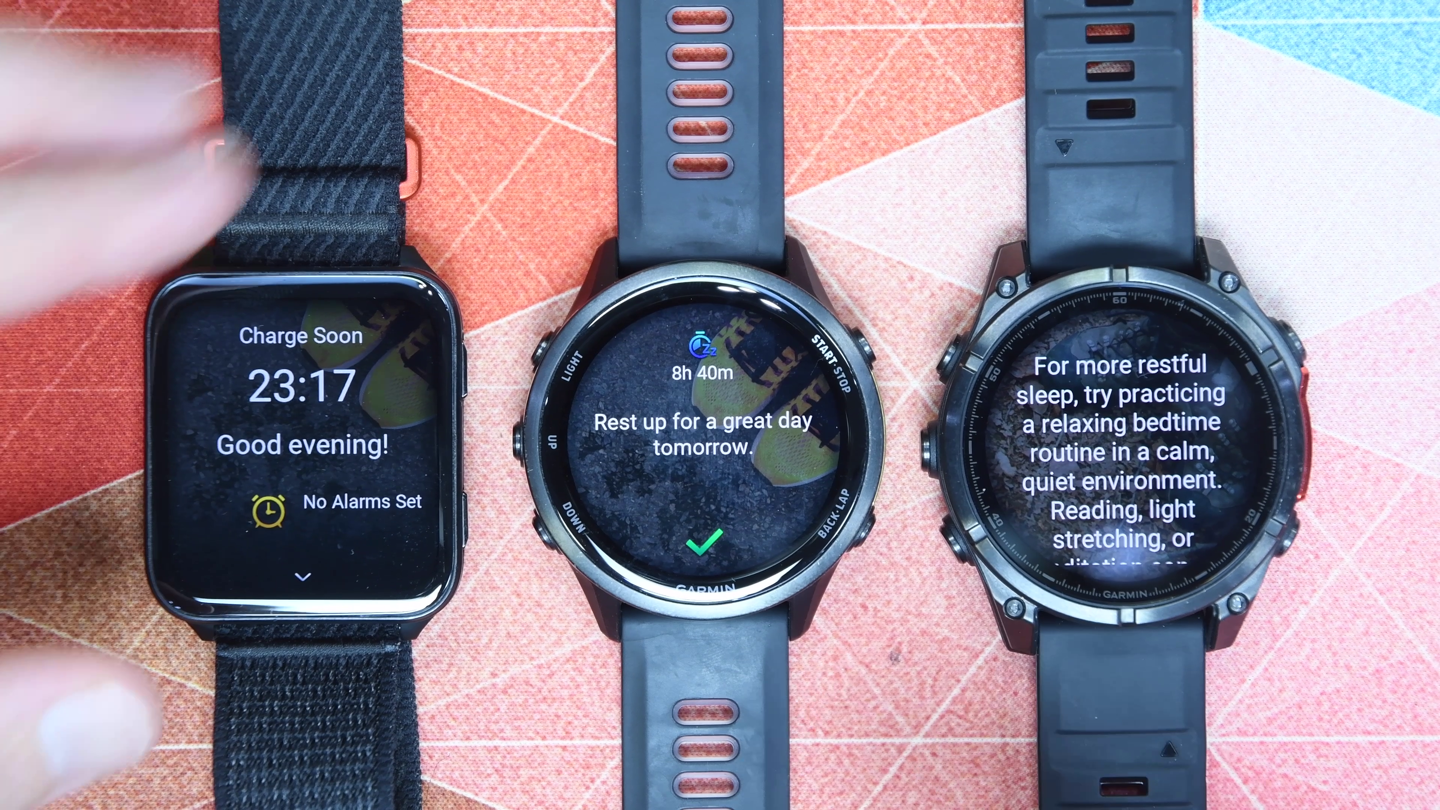
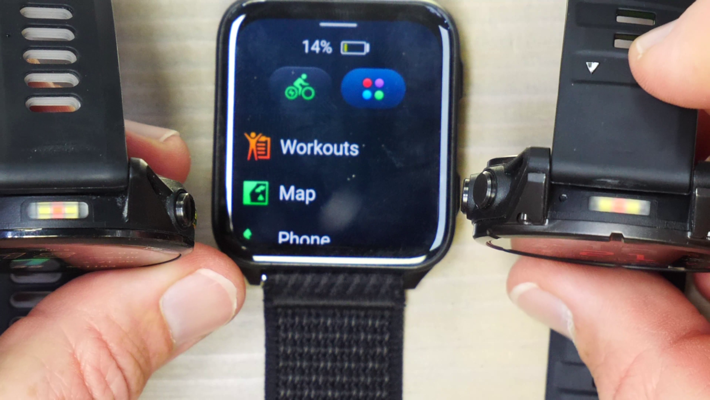
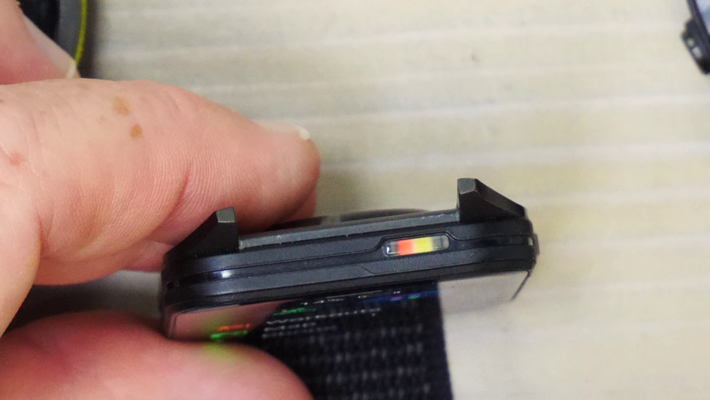


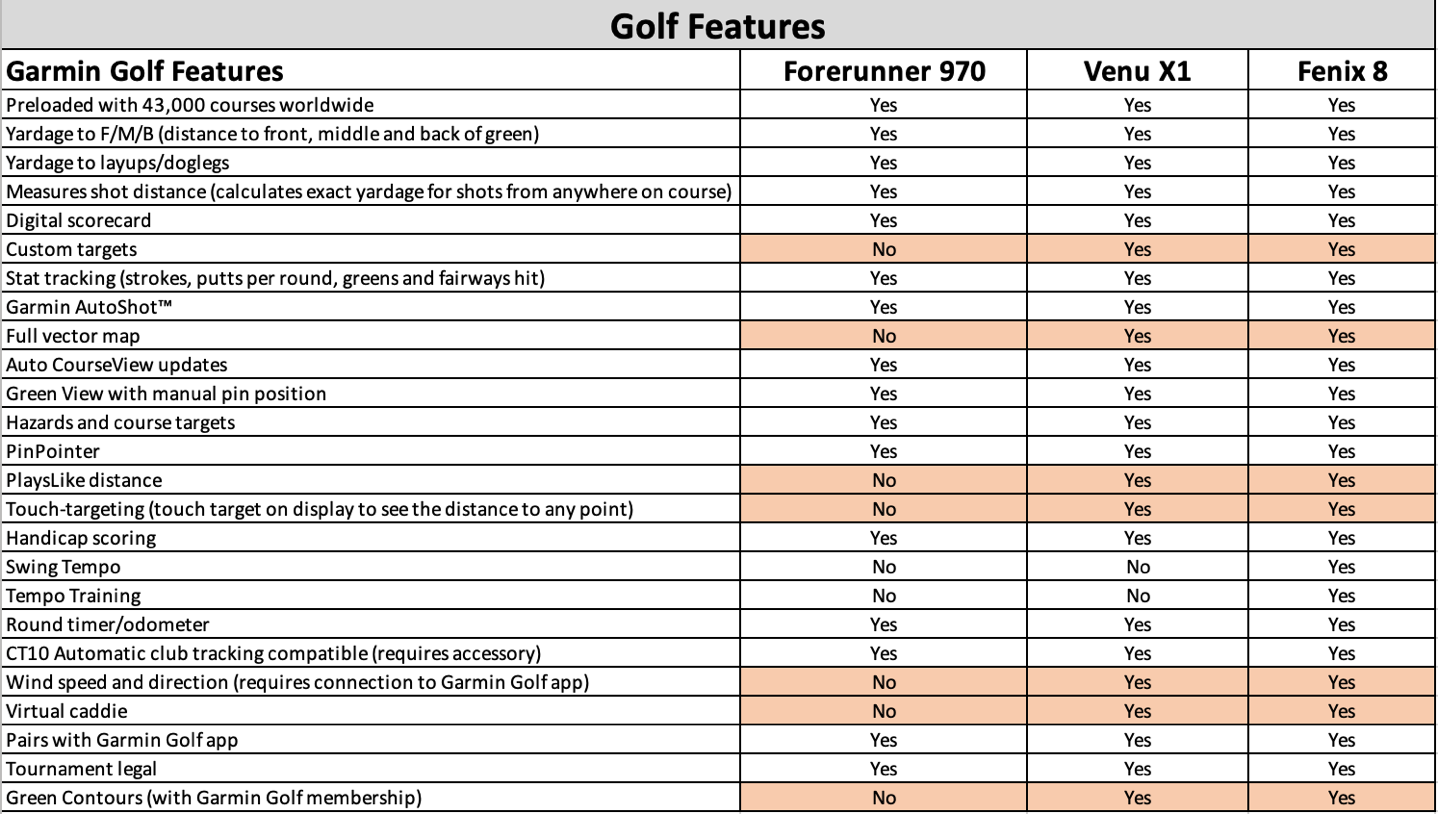
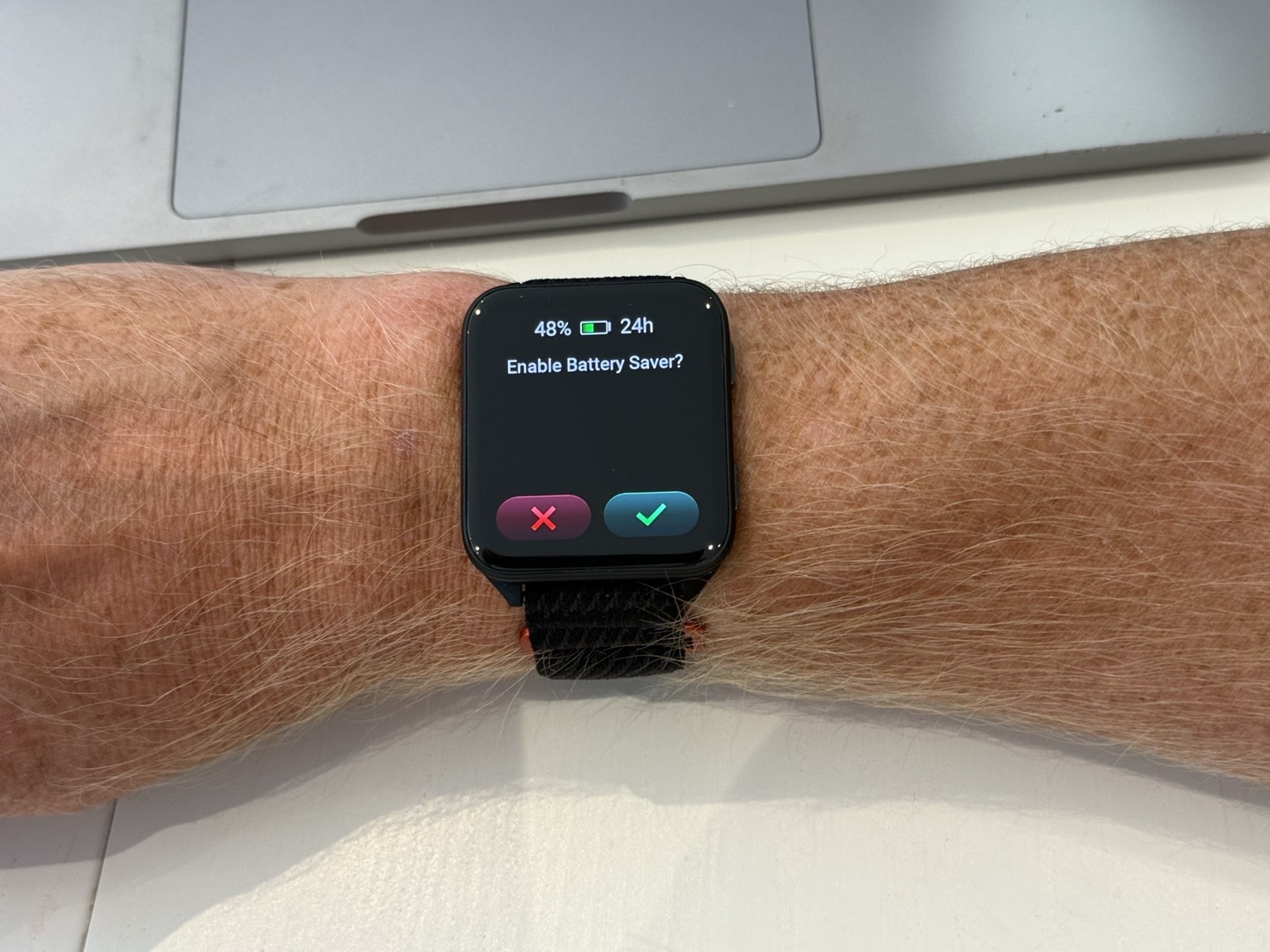
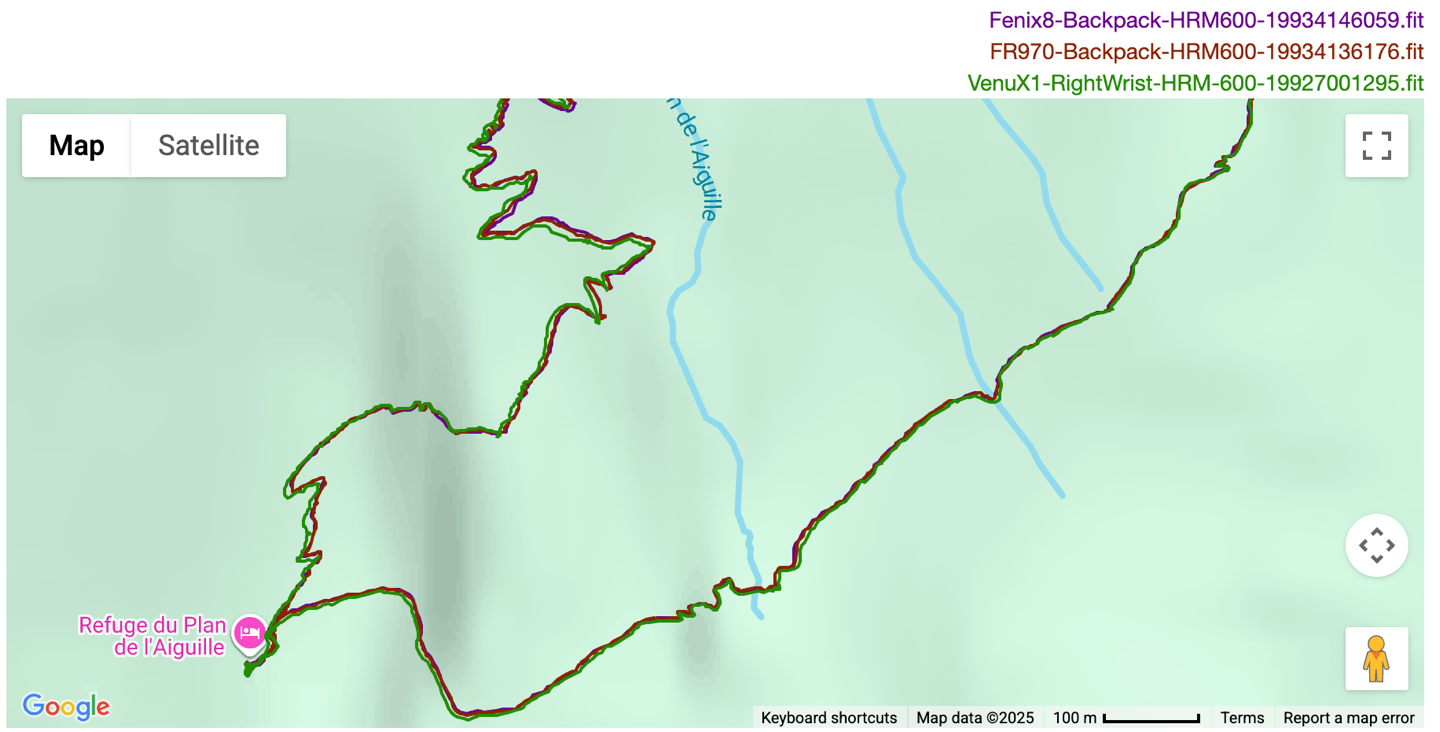

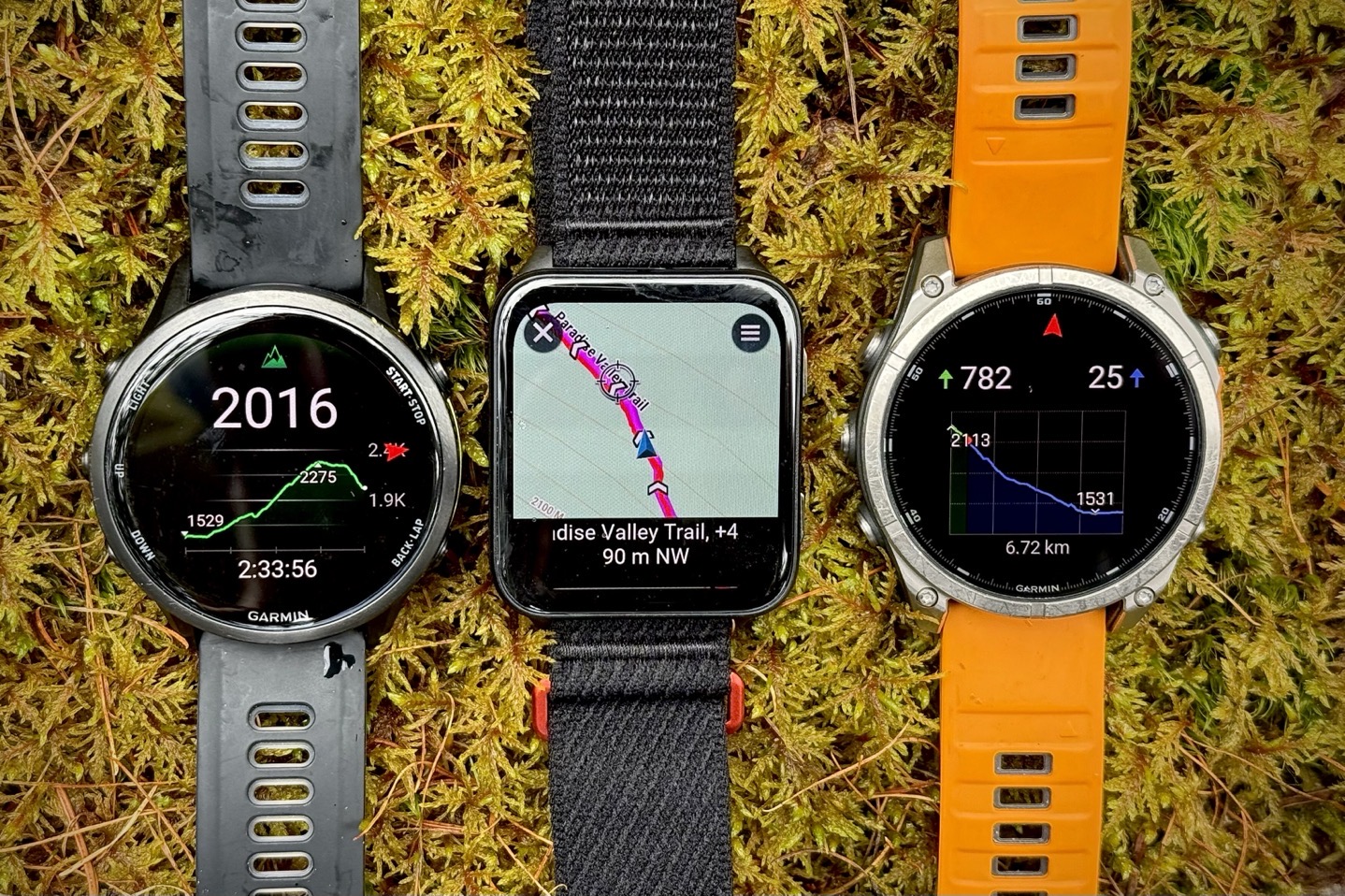
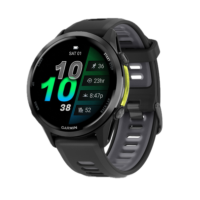
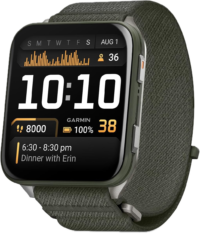
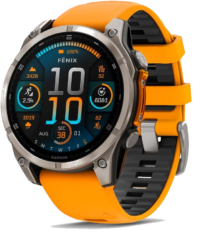





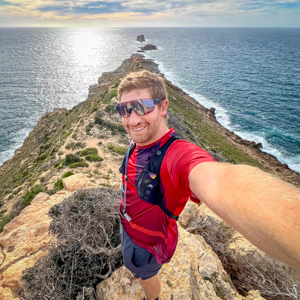











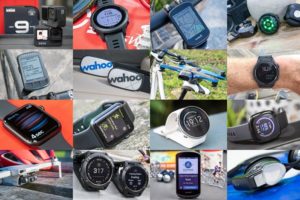

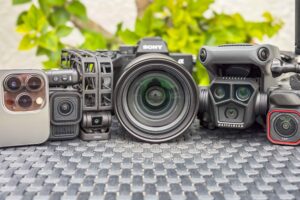

Re mid size Fenix — in some places you say it’s 47mm, in others 48mm
Good catch, all 47mm. Thanks and tweaked!
My current headcanon is that the Fenix 8 Pro with a 48mm case is coming out soon.
(More realistically there are a stupid amount of numbers in this article and it was a typo… but mine is more fun)
Personally I am only a cyclist (never running or 🤢 triathlon), but went with the FR970 to finally upgrade from my Epix (non-Pro). I get the battery life argument for the Fenix but ultimately couldn’t justify the price increase for dive features I’d never use. Also really like the slimmer size and weight, don’t feel like I’m missing out on much else.
Forgot to mention, wish they had an all-black version of the FR970 though. The one minor negative about its appearance is I don’t love the lime green accent.
Worth pointing out how bug ridden the 970 firmware is, and the betas.
And the fact that the microphone and voice assistants are DoA.
Yeah, I covered that in the FR970 review pretty heavily.
I’d say the most recent beta from about a week ago though, is far better (for all three units).
Hey Ray,
did you forget to put conveniency links to the images?
On PC I can right click and open the images in a new tab and then have to delete the “-720×324” part from the URL. It’s a bit finnicky though.
Sorta, it’s messy.
Basically, the software I use on the Mac to create my posts (MarsEdit) doesn’t set the target to open an image to anything, and thus, I have to manually go back into WordPress after uploading and touch each image and set it to open up the original version. Usually, but time I hit publish (especially with this post), I’m so over it that I’m ready for ice cream. :)
Just did that now (the tagging, not ice cream…). :)
In your third to last sentence, did you really mean to say Forerunner 970? Seems like Venu X1 makes more sense there.
I did actually mean FR970 there (though Venu X1 also works), but was attempting to clarify that while the FR970 has the added buttons the Venu X1 lacks, it still lacks the battery I want in always-on. Just tweaked it a bit to make it maybe more clear.
In the section Found This Post Useful? Support The Site! link on the Garmin Forerunner 970 leads to review of 955’s
That…that is a trickier one to fix. Will have to do some digging into why the backend product ID isn’t directing properly. Cheers!
Ray, could you please add more config details about the battery charts? For example was this with SatIQ and default brightness on all devices?
All of these charts are:
1) Fenix 8 & FR970 with default ‘AutoSelect’ (aka SatIQ)
2) Venu X1 at ‘All Systems’ default (doesn’t have SatIQ)
3) Fenix 8 at default brightness (2/3rds)
4) FR970 & Venu X1 at 1/3rd brightness (non-default, lowered it)
5) Navigation enabled (route following) on all of them
6) Always-on display on all of them
Ray, great comparison. Thank you.
Do you know please what’s the battery life when always-on display is off? Especially for X1? Thanks
If you had to permanently choose between an Apple Watch Ultra X and a Garmin Fenix X (you get the newest version if you want), which would you choose?
I have questions about two apps:
Tubing: I think it’s for waterslides in waterparcs? I tried using it for it but this wasn’t working. Or is it for being hauled around in an truck tire tube behind a boat? If so, why is that a sport Garmin offers an app for? There are thinks like online skating we asked years before it came and tubing would be there?
Whitewater: is this what’s „rafting“ on a German speaking watch?
The second, being hauled around on a tube from a boat.
Whitewater would typically be deemed Whitewater Rafting in most US-speak. Just shortened here.
Ultimately, the reason Garmin has been adding so many sport profiles lately is simply that people ask for different ways to categorize things. In theory, all the higher-speed water ones are tied to a 100m waterproofing requirement. The further theory there is that Garmin designs the 100m watches different not from just a underwater depth standpoint, but more specifically high speed water injest.
Those are technically two different ISO/etc specs, but, Garmin has found a way to justify the separation.
I don’t think there’s any real risk in rafting that water impact speed is all that high, though, I could certainly see the justification for tubing, where people go stupid-fast and fly off and hit the watery concrete.
Finally, note that Garmin does have “Inline Skating” in this list.
Thanks for being a supporter!
Great informative article, thank you. Any chance you can cover Fenix 8 vs Approach S70?
That would require me to golf. I’m good at the windmill hole on put-put, but not much else.
S70 vs F8 for golf – both will have the same great fairway views. Both have the advanced options for Green Contours with Garmin Golf membership. Both have full on-device golf course data base. Both support for CT10’s. Only the S70 supports CT1’s. Both have support for the Z30 – one of my favorite features.
Two cool things that are only available on the S70 is Tap to Mark pin and Press to Mark Putt (press top button while on the Green). That lets you track putts without CT1’s or CT10’s, which helps you get an accurate score without CT1’s or CT10’s.
F8 has the big advantage of 5 buttons.
Display is basically the same between the 47mm F8 and S70.
If golf is your only sport, I’d probably recommend the S70. Otherwise I’d probably go F8.
Maybe come back in 20+ years when DC is finding those Ultras too much work and the reviews will be based on Golf and which watches have the ability to track a 15 day cruise 🤣
Hi Ray, great comparison of the 3 devices. One quick question if I may? In your table it says all 3 have the Tides widget but on my FR970 I have been unable to find it, both on the regular software and beta software. I’ve always thought it would be great to have on the FR970 for the ocean swim component of a triathlon. Keep up the great work mate! :)
Yeah, Ray says in the article that you can download Garmin’s Tides app from Connect IQ, but that app isn’t actually listed as compatible with the 970 (or any Foreruner). There are some third party ones but in my experience they’re kind of a pain to use.
How is the ambient lighting between the three? I notice on the fenix 8 that in very dark environments, the display dims greatly even though brightness is set high to the point it is hard to read in certain screens. Does the other two have the same behavior?
Fenix 8 AMOLED or Fenix 8 MIP? I haven’t had that problem on the Fenix 8 AMOLED. Any chance there’s something wrong in the settings (or, maybe needs a reset)?
Said differently, zero issues with seeing brightness on any of the three. In fact, with the X1 specifically, I’d argue Garmin has much work to do there on brightness (a good example being in a theatre, it’s just stupid bright by default, compared to an Apple Watch Ultra, which does a much better job at managing that).
Personally, I find the Auto Dimming of the F8 Amoled a bit too dimming in low light. Largely because of that, I always leave it on max brightness. With max brightness, I don’t have a problem.
Great article, thank you. Climbpro on the Venu X1 is a different GUI than the Fenix 8 (or even the 1050). It’s actually a bit nicer to see at a glance. It would be a nice upgrade into the reset of the EcoSystem.
Great article, thank you!
Not sure what to think about Garmin making a watch that looks like an Apple watch with the battery life of an Apple watch.
Very curious if they find a market for that, maybe people who would like an Apple watch but don’t want to have an iPhone?
I do find the Venue X1 pretty appealing. I do not need the full Fenix/Garmin battery life but I am worried that what the X1 offers is a bit on the short end, as I wear my watch overnight. Otherwise, I would not mind!
I have the same problem with the Apple Watch Ultra. I am struggling to find a good charging routine.
I get a little more battery in my testing on the x1, I got 2 days 3-5 hours with always on and 2 activities (with music). I switched to glances and hardly notice the need for always on.
I sleep with my. I bought an extra charging cable to charge at work in the mid morning when I’m normally at my desk.
Garmin is far superior as a fitness watch than Apple watch has even been.
Hi, thank you for this – these are three of the watches I’ve been looking at upgrading to from my Swim2. Is it fair to assume that all software updates will come to the Quatix 8 as well? Thanks!
There were a lot of comments saying the 965s bezel was super prone to getting scratchs (the glass sits up high If I recall), hows the 970 in comparison?
For a sensitive wrist, nothing beats the X1. I love mine for the comfort where I barely notice it. None of that can I say about all other Garmins. So if COMFORT and weight is important to you, while wanting a classy looking watch with all the bells and whistles, then the X2 is for you.
Oh and BTW – I have no issues whats so over with mine. I’m on latest beta…
> Despite lacking a ‘Pro’ monitor (e.g. Venu Pro), it’s very much a pro-level Venu.
Do you mean moniker?
Indeed.
I’d BUY TODAY something similar to the X1, but with 2 band-GPS.
I’m 100% not (!) interested in its speaker/microphone features.
Maybe with a “more sense” price.
I got my FR 970 this week and have been spending some quality time with the manual. There is a voice control to set the brightness. It looks like 0 to 100% in 1% intervals. Not sure how this fits in to Watch Settings/Display and Brightness. I haven’t had a chance to play with it but it may be a way to moderate battery burn.
Link to Garmin FR 970 manual.
link to www8.garmin.com
Good thought, but just trying it, selecting “Set Brightness to 0%” all the way to 35% shows Brightness: Low. 100% shows “Brightness: High” as does 75%. So looks like it’s still limited to Low, Medium, and High.
What does the display look like? Dull at 5%, bright at 50%?
” – essentially to help those with more finely aged eyesight ”
🤣🤣🤣 love your jokes!
“it’s the single biggest reason I’d shy away from the Venu X1 right now”
Also for me. I almost bought the X1 but now I’ll wait an see if the gibe more brightness options with an update.
Hi Ray, thank you for this great comparison! Is the spreadsheet with the detail features available anywhere? I have been trying to find it (also in the yt video description), but no luck.
I haven’t published it, mainly because these days various sites/channels simply steal so much of what I publish and use AI to re-publish it without credit.
While adding the Excel spreadsheet itself isn’t a huge blocker, it’s one more hurdle to help delay. That said, I’ll reply back to your e-mail address with a copy of it. No prob!
Thanks for being a DCR Supporter!
Totally understandable, thank you so much!
Wow, that sucks. I try to read actual sites instead of the AI summaries browsers generate, but other sites stealing I hadn’t thought about
Hello,
Thank you for this interesting comparison.
You wrote “However, for really the first time ever in Garmin’s history, the actual menus of all three devices are identical, even if the styling of the fonts/icons are slightly different.”
The Forerunner 970 and the Venu X1 (and also the Forerunner 570 and Vivoactive 6) share the same software (versioning).
The Fenix 8 is different, this watch shares the same software versioning with Fenix E, Enduro 3, Tactix and Quatix 8.
So, my guess is that there must be something different between the Forerunner 970/Venu X1 and Fenix 8. Perhaps not in functionality or presentation, but maybe in technical components.
Do you have any information about this kind of differences?
Thanks for this. Maybe it will help people (who are confused by Garmin’s model lineup) realise that the company is trying to create three flagship models instead of one, targeting different consumer preferences.
An important issue with regards to battery is if these all have the same proprietary charge port?
All use the same Garmin charging port.
thanks
Thanks for doing the golf differences breakdown!
Can any of these AMOLED watches be used as a cycling head unit (on the handlebar) if I’m using external HR device or will the display turn off?
Hit or miss if the screen stays bright enough to read.
With the Fenix, Pop off the quick fit band and pop it into the bike mount. A few seconds. 970 works with the 47mm Fenix bike mount if you replace the stock band with a QuickFit band which is easy to do. Not quite as tight as the Fenix in the mount but it’s not popping out either. The MiIP F8’s or Enduro are definitely better for riding.
Hi Ray,
Can you please share info about sw version – as imho for FR970 sw beta 12.x is much more better in consumption then version 6.x
Thank you
Lada
For the 970 workouts, 12.x series. And for Venu X1 & Fenix 8, all latest public beta.
For daily wear, mostly based on 6.x production series for the 970. Once I get the Venu X1 in-depth review wrapped up, I’ll swing back past the FR970 to see where daily battery sits again with latest public beta. But happy to hear tidbits (just note if it’s always-on, and roughly how many hours GPS per day).
Why is your website so annoying on iPhone. Reading a line and then the page shifts by 2 or 3 paragraphs. Continues the whole time reading. As someone who reviews user experiences…I figure you’d be sensitive to this.
Haven’t seen this problem myself, but you could always try viewing the page in reader mode to see if that helps.
1) In safari, scroll up / swipe down on the page to reveal the address bar
2a) Long press the page settings icon to the left of the address (“dcrainmaker.com”). This turns on reader mode
or
2b) Tap the the page settings icon to the left of the address (“dcrainmaker.com”) and tap the Show Reader button
link to support.apple.com
(Not defending or criticizing anyone, only trying to help)
Small hint:
If I navigate to your site to:
Menu – Product Reviews – Garmin
.
There:
“Garmin Forerunner 970 In-Depth Review: Brilliance at a Cost?”
is not displayed at all.
i returned my X1. There was glue visible between the bezel and the casing. For a watch costing almost £700 i expected better build quality.
No buttons and no brightness controls are the 2 reasons I and those I know sent ours back. Make it thicker, allow actual control of the brightness instead of pretending and add 5 buttons and you have a winner.
Is it worth buying FR965 in 2025?
It would be awesome to have features of X1 in a size of the former VenuSq. It’s cool that they offer something with big screen, but any fitness, outdoor or just regular houskeeping activities are a serious threat for such a big device on your wrist.
Hi, GPS chipset are the same for these 3 watches family (excluding Fenix E).
Software version is the same across these 3 models.
Since now, actual Beta Phase, FRx70 and Venu X1 are running the same System version 12.xx. This should be a good sign in terms of software quality in the futur. But even more complicated to undertsand the Garmin portfolio :-)
Venu X1 no multi-band (dual-frequency) is a Garmin choice, when power manager (and SatIQ) could help dealing with the battery drain implied.
But this watch is already an Apple watch like when we talk about battery life …
My personal experience – the Fenix8 HR sensor was particularly bad. Like 20-30bpm bad, with pretty dramatic swings. I did a DCR-inspired test by wearing an old Fenix6 on my right hand, and my new Fenix8 on my left and the difference is wild. Tried all kinds of different bands, positions… still bad.
Trying to see w/ Support how they’ll fix this issue but it’s wild to me how bad my own device was.
I have the Fenix 7X with Elevate 4, and before F6Pro WHR Elevate 3.
Elevate 4 is not better … i was thinking that Eleavte 5 Fenix 8 (Fenix 7 Pro) was improved over “4” version
i heard that another minor difference between fenix 8 and forerunner 970, is the open water swimming: on the fenix 8 you can do a workout in open water whereas on the forerunner you can’t. Is this true? Thanks
“finely aged eyesight” – thanks, that cheered me up!
As you mentioned, the battery life of the 965 is much better than the 970. I kinda regret buying the 970 and instead sticking with the 965. The display on the 970 is brighter but the 965 was just fine. Like you, I use Always On Display mode.
I would say if you want better battery, don’t consider just the Fenix 8 but also the Forerunner 965.
Vs the 965, the 970 has brighter display, flashlight and ECG app. And worse battery.
Hi Ray
Did you have had any issues with the visibility of the solar versions of the Fenix 8 when using the maps while navigating (compared to the amoled versions)?
We live in the sunny south of France thus the choice of a solar version is more obvious, or am I wrong?
Thanks for sharing your experience.
Ed